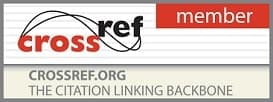ISSN: 2456-4419, Impact Factor (RJIF): 5.88
Peer Reviewed Journal
2024, Vol. 9 Issue 1, Part E
Correlation of dynamic balance and static balance with body mass index
AUTHOR(S): Dr. Haridas Kuloor and Tilak Kini T
ABSTRACT:
The study aimed at understanding correlation between individuals of different BMI categories and their dynamic and static balance. Total of 80 subjects participated in the present study. All the subjects who participated in the study were below 25 years of age. Subjects selected for the study was at random. After collecting the consent forms, the height and weight of the subjects were measured using stadio-meter and digital weighing machine. The subjects were categorized as Underweight, Ideal weight, Over weight and Obese based on their body mass index. Pearsons Correlation method was used to evaluate the data collected. The study was purely a quantitative assessment. The results showed statistically significant correlations between body mass index and balance: underweight and ideal body mass index (p<0.005). On the other hand, there was a slightly negative correlation of body mass index of overweight and obese with balance (static and dynamic). It was found that the individuals of overweight and obese body mass index had difficulty in maintaining balance while compared to underweight and ideal weight body mass index. The study concluded that the postural balance (dynamic and static) correlates with body mass index.
The study aimed at understanding correlation between individuals of different BMI categories and their dynamic and static balance. Total of 80 subjects participated in the present study. All the subjects who participated in the study were below 25 years of age. Subjects selected for the study was at random. After collecting the consent forms, the height and weight of the subjects were measured using stadio-meter and digital weighing machine. The subjects were categorized as Underweight, Ideal weight, Over weight and Obese based on their body mass index. Pearsons Correlation method was used to evaluate the data collected. The study was purely a quantitative assessment. The results showed statistically significant correlations between body mass index and balance: underweight and ideal body mass index (p<0.005). On the other hand, there was a slightly negative correlation of body mass index of overweight and obese with balance (static and dynamic). It was found that the individuals of overweight and obese body mass index had difficulty in maintaining balance while compared to underweight and ideal weight body mass index. The study concluded that the postural balance (dynamic and static) correlates with body mass index.
Pages: 312-314 | 1652 Views 499 Downloads

How to cite this article:
Dr. Haridas Kuloor, Tilak Kini T. Correlation of dynamic balance and static balance with body mass index. Int J Yogic Hum Mov Sports Sciences 2024;9(1):312-314.







 Other Journals
Other Journals